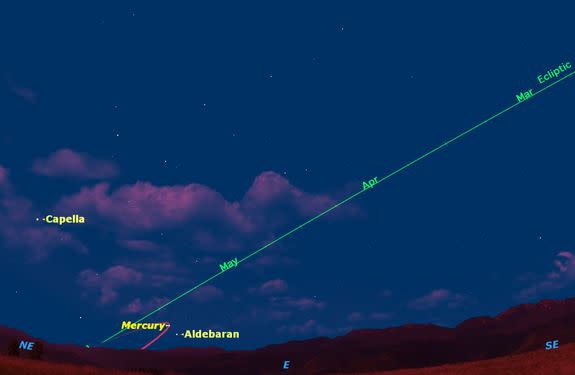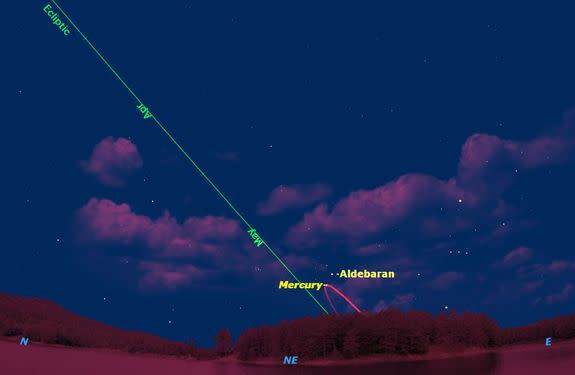Spot Elusive Planet Mercury in the Predawn Sky This Week
Mercury is a difficult object to spot, because it's always clinging closely to the sun’s apron strings. So you might be excused for missing its brief appearance this week in the predawn skies.
After many attempts to observe Mercury, I’ve found that the best time to spot it is about half an hour before sunrise in the morning sky, or half an hour after sunset in the evening sky. It’s always a balancing act between Mercury’s low altitude and the brightness of the background sky. I find 7x50 or 10x50 binoculars helpful in spotting Mercury, though once I’ve located Mercury in binoculars I usually have no trouble seeing it with the naked eye.
Because of the tilt of the ecliptic — the path the sun and planets follow across the sky — some apparitions of Mercury are more favorable than others. Usually apparitions that are favorable for observers in the Northern Hemisphere are unfavorable for observers in the Southern Hemisphere, and vice versa.
The tilt of the ecliptic would indicate that this current morning apparition — which runs through the next week or so — favors southern observers, but as you can see from these two views, it really isn’t much different; catching Mercury this week will be a challenge for observers everywhere in the world.
A secondary factor affecting Mercury’s visibility is the tilt and eccentricity of its orbit. At 7 degrees, Mercury’s tilt is greater than that of any other planet. The eccentricity of its orbit, which measures how far it deviates from a circle, is also the greatest, more than twice as eccentric as Mars’ orbit. (The dwarf planet Pluto, however, trumps Mercury in both tilt and eccentricity.)
The tilt this week also favors southern observers, as you can see in the charts. On them, Mercury’s orbit is marked in red and the ecliptic in green — but even this doesn’t help much.
So if you are successful in spotting Mercury in the next few days, congratulate yourself, and let us know here at Space.com.
Editor's note: If you capture an amazing view of Mercury or any other night sky sight that you'd like to share with Space.com, send photos and comments in to: spacephotos@space.com.
This article was provided to Space.com by Simulation Curriculum, the leader in space science curriculum solutions and the makers of Starry Night and SkySafari. Follow Starry Night on Twitter @StarryNightEdu. Follow us @Spacedotcom, Facebook and Google+. Original article on Space.com.
Hercules, Herdsman and a Dragon In June 2015 Skywatching | Video
Asteroids and Dwarf Planets Visible In June 2015 Skywatching | Video
Copyright 2015 SPACE.com, a Purch company. All rights reserved. This material may not be published, broadcast, rewritten or redistributed.


